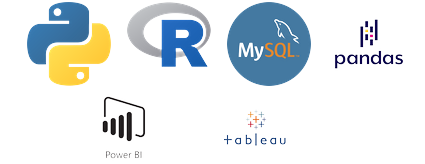What-If Analysis in Excel is a powerful feature that allows you to explore different outcomes by changing inputs in your formulas. The most commonly used tools within What-If Analysis are Goal Seek and Scenario Manager.
1. Goal Seek
Use Case: Find the required input to achieve a specific goal in your formula.
Example:
You are calculating profit with the formula: Profit = Revenue – Cost
Suppose your cost is $10,000, and you want a profit of $5,000. You need to find the revenue required to achieve this profit.
Steps:
- Set up the formula in a cell:
- For example, in C2, enter
=B2 - A2where:- B2 is Revenue
- A2 is Cost
- Enter 10,000 in A2 (Cost).
- Leave B2 (Revenue) empty for now.
- For example, in C2, enter
- Go to Data > What-If Analysis > Goal Seek.
- In the Goal Seek dialog box:
- Set cell: Select the cell with your formula (e.g.,
C2). - To value: Enter the goal value (e.g.,
5000for profit). - By changing cell: Select the cell with the input to adjust (e.g.,
B2for Revenue).
- Set cell: Select the cell with your formula (e.g.,
- Click OK.
Result: Excel calculates the Revenue required to achieve a profit of $5,000 (e.g., $15,000).
2. Scenario Manager
Use Case: Analyze multiple scenarios by changing inputs and comparing outcomes.
Example:
You are projecting sales for three pricing strategies and want to see how revenue changes.
| Price per Unit | Units Sold | Revenue |
|---|---|---|
| 20 | 1000 | =B2*A2 |
Steps:
- Set up your formula in Excel:
- For example, in C2, enter
=A2 * B2(Revenue = Price × Units Sold).
- For example, in C2, enter
- Go to Data > What-If Analysis > Scenario Manager.
- In the Scenario Manager dialog box:
- Click Add to create a new scenario.
- Name the scenario (e.g., “Low Price”).
- Define the Changing Cells (e.g.,
A2andB2for Price and Units Sold). - Enter the values for this scenario (e.g., Price = 20, Units Sold = 1000).
- Add additional scenarios:
- “Medium Price”: Price = 30, Units Sold = 800.
- “High Price”: Price = 40, Units Sold = 600.
- Click Summary to generate a comparison table for all scenarios.
Result: A summary table showing the Revenue for different pricing strategies.
Key Differences
| Feature | Goal Seek | Scenario Manager |
|---|---|---|
| Purpose | Find a single input to achieve a goal. | Analyze multiple sets of inputs at once. |
| Output | Updates the input cell directly. | Creates a summary of different scenarios. |
| Use Case | Backward calculation. | Comparing “what-if” situations. |

